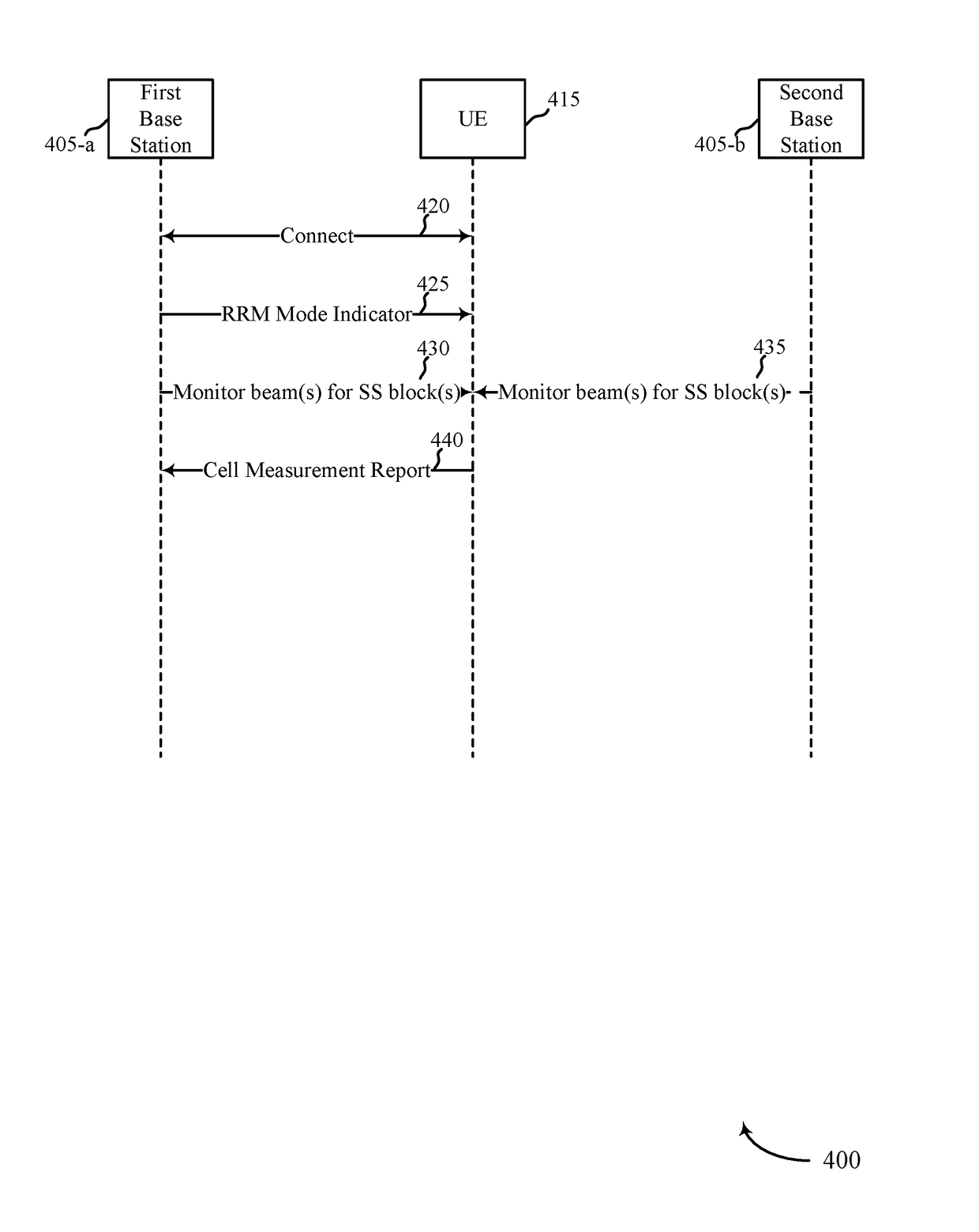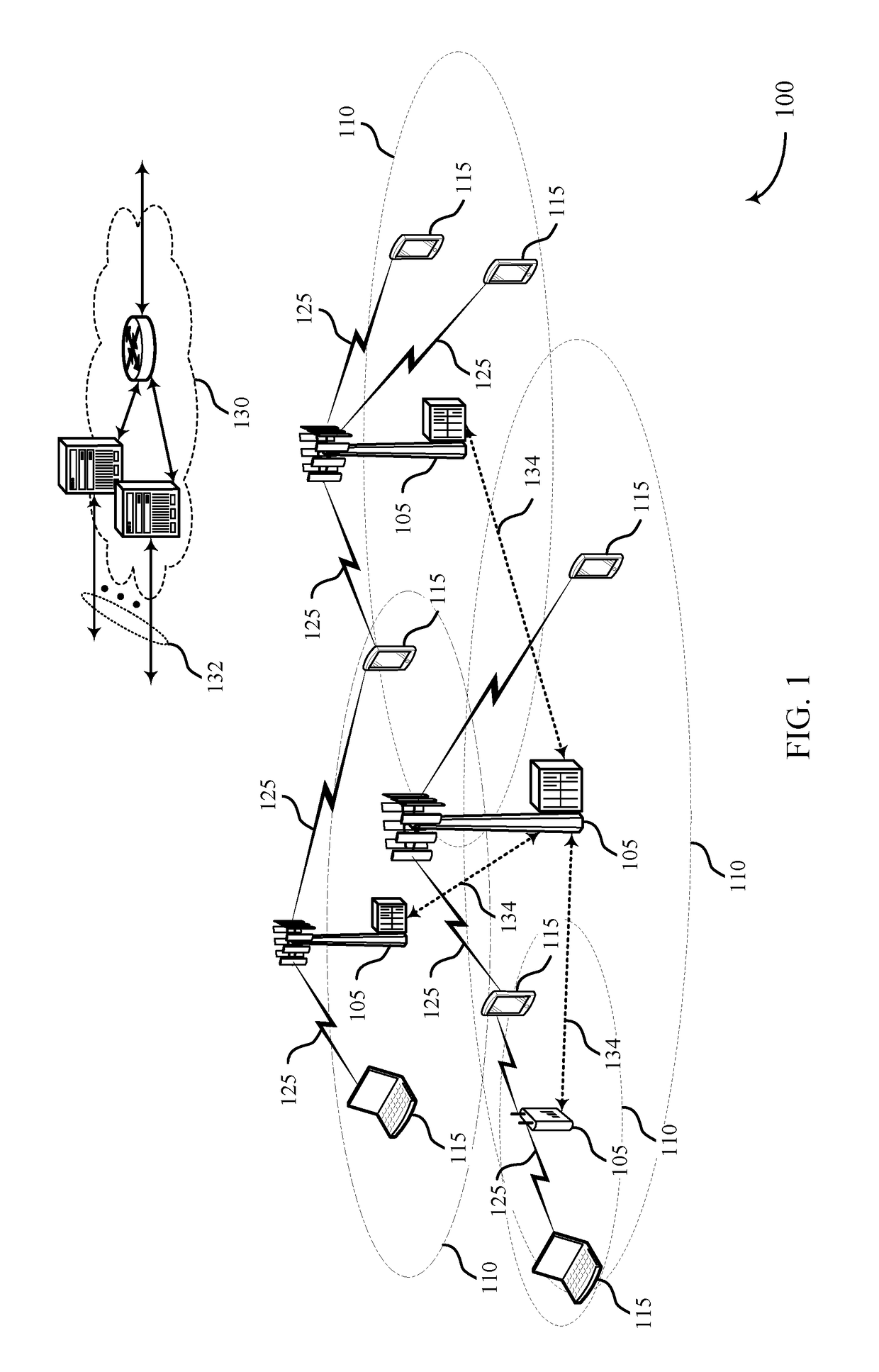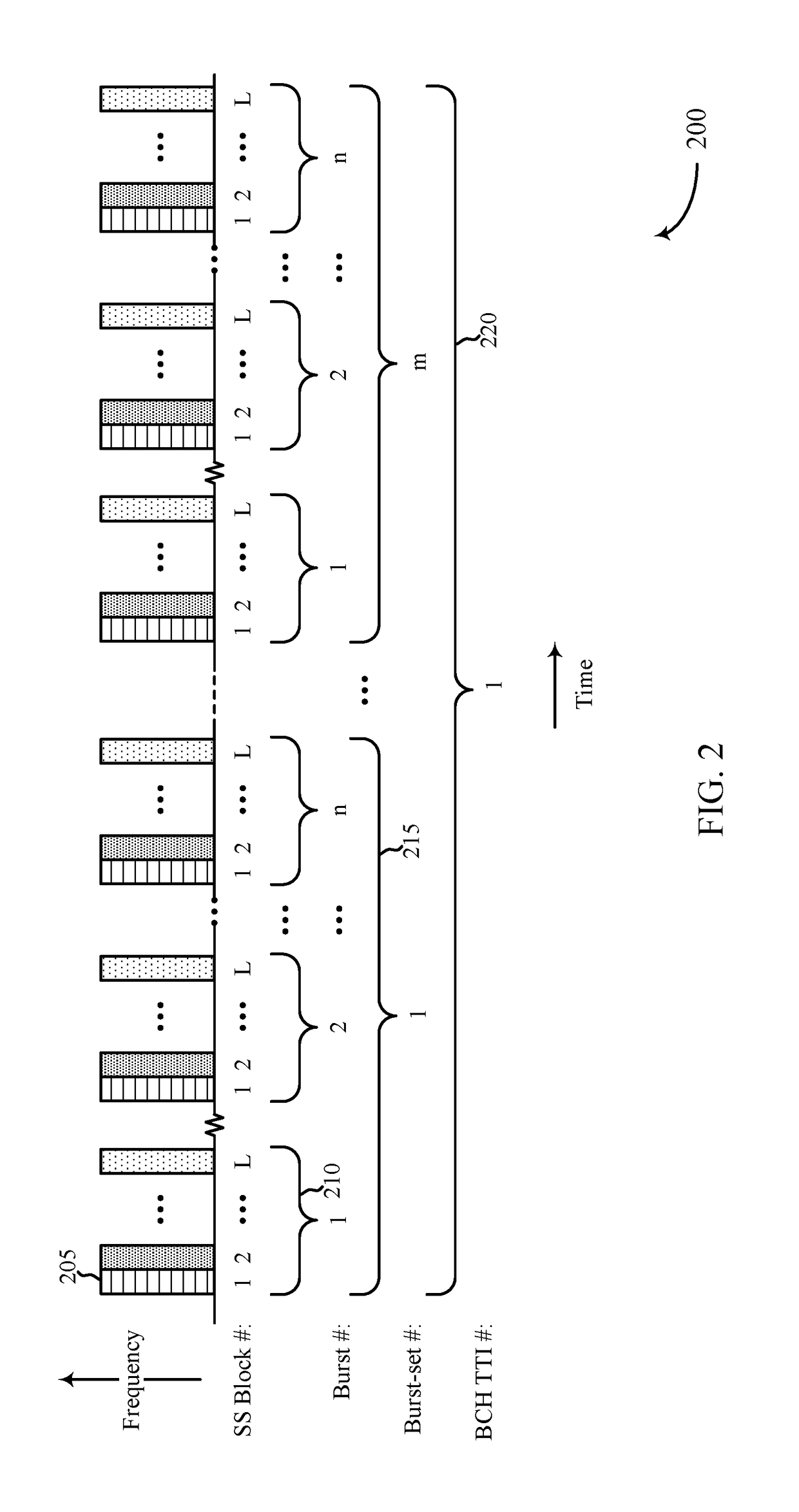Techniques to provide energy efficient radio resource management
a radio resource management and energy-efficient technology, applied in the field of wireless communication systems, can solve the problems that decoding signals can consume substantially more resources (e.g., time, power, etc., and achieve the effect of substantially more resources
- Summary
- Abstract
- Description
- Claims
- Application Information
AI Technical Summary
Benefits of technology
Problems solved by technology
Method used
Image
Examples
Embodiment Construction
[0063]A wireless communications system (e.g., a mmW system) may utilize directional or beamformed transmissions (e.g., beams) for communication. For example, a base station may transmit signals on multiple beams associated with different directions. In some cases, the base station may engage in beam sweeping over a portion (or all) of the possible beams for transmitting messages or signals intended for user equipments (UEs) distributed throughout a coverage area of the base station. For example, a base station may transmit multiple instances of a synchronization signal (SS) block, on different beams, during a periodic broadcast channel transmission time interval (BCH TTI). In other cases, a base station may transmit multiple instances of an SS block on a same beam, or in an omnidirectional manner, during a periodic BCH TTI.
[0064]An SS block may include, for example, a primary synchronization signal (PSS), a secondary synchronization signal (SSS), a physical broadcast channel (PBCH),...
PUM
 Login to View More
Login to View More Abstract
Description
Claims
Application Information
 Login to View More
Login to View More - R&D
- Intellectual Property
- Life Sciences
- Materials
- Tech Scout
- Unparalleled Data Quality
- Higher Quality Content
- 60% Fewer Hallucinations
Browse by: Latest US Patents, China's latest patents, Technical Efficacy Thesaurus, Application Domain, Technology Topic, Popular Technical Reports.
© 2025 PatSnap. All rights reserved.Legal|Privacy policy|Modern Slavery Act Transparency Statement|Sitemap|About US| Contact US: help@patsnap.com



